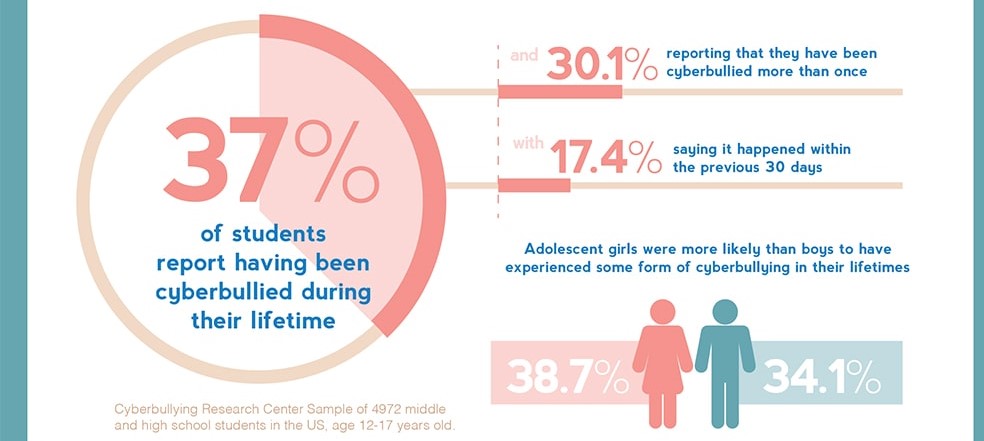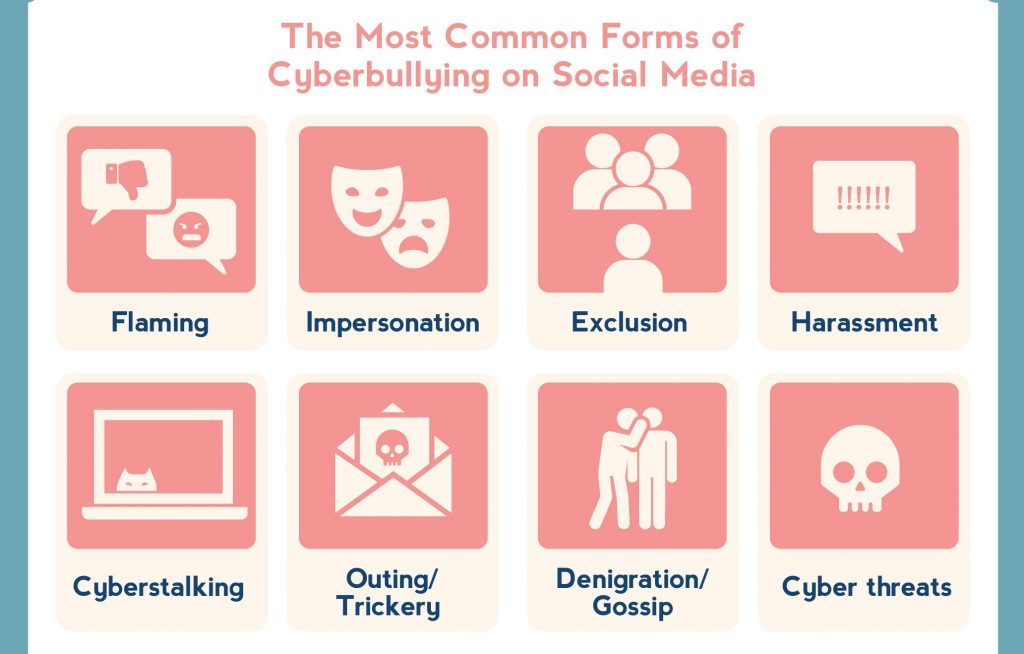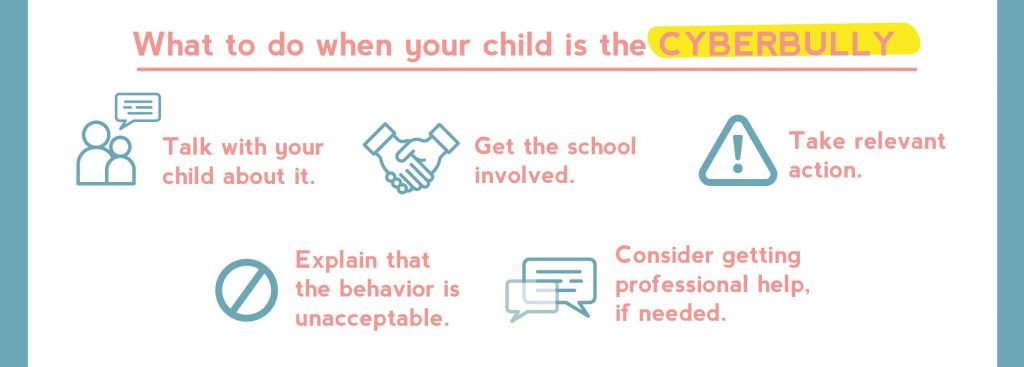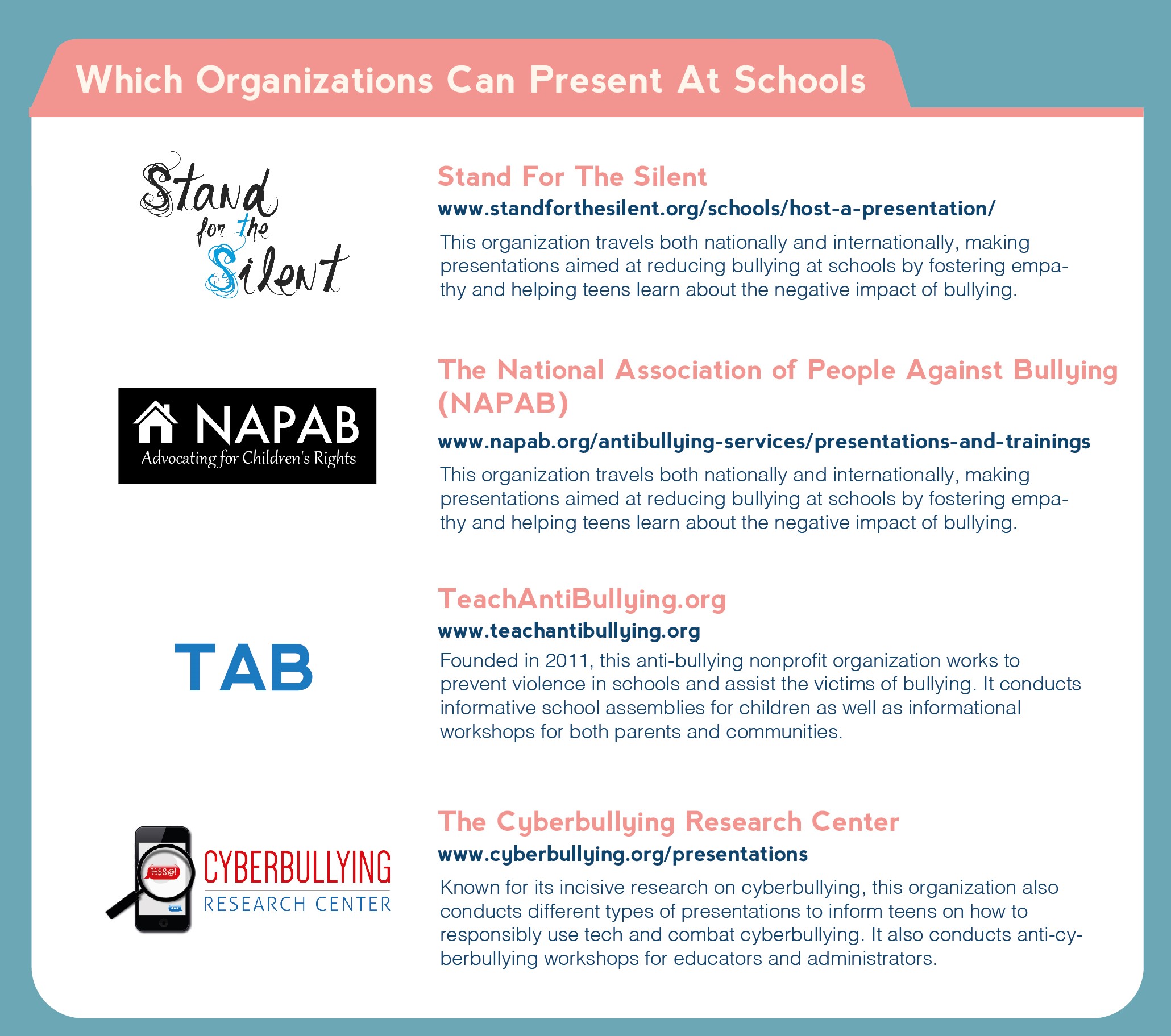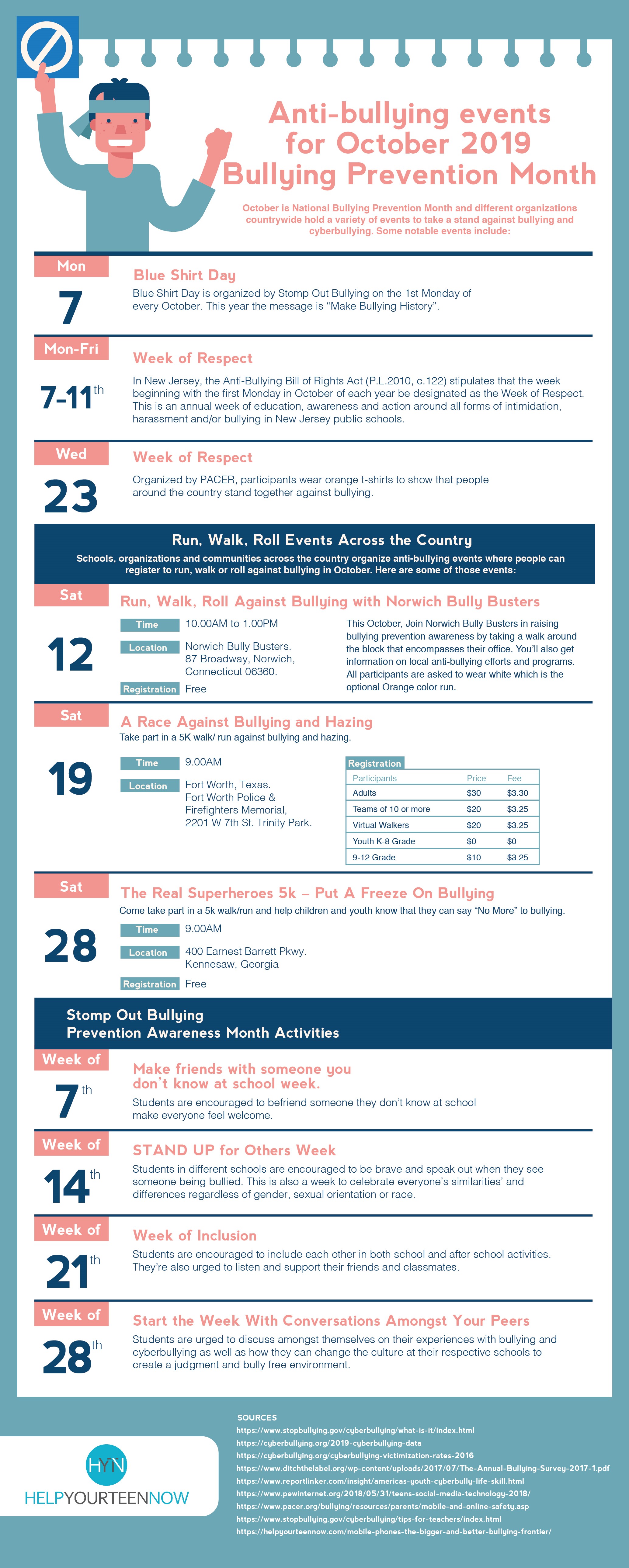
Understanding the cyberbullying youth face on social media and what parents can do about it
Technology has certainly transformed our lives in positive ways and smartphones, the internet and social media are now an integral part of our lives. However, the tech revolution has a dark side, most notably cyberbullying.
Cyberbullying is defined as repeatedly and intentionally mistreating, harassing or making fun of another person online while using digital devices such as cell phones or computers. According to StopBullying.gov, cyberbullying includes sending, sharing or posting harmful, mean or false content about someone else or sharing private or personal information about someone with the intent of causing humiliation or embarrassment.

While children have bullied each other for generations, the emergence and widespread adaptation of technology, especially social media, has made it easy for bullies to expand the reach and extent of their harm.
Cyberbullying on social media can be especially intrusive and vicious and it sometimes crosses the line into criminal or unlawful behavior.
By The Numbers
Cyberbullying is a growing problem in the country. Here are some statistics showing the seriousness of the issue:
- 37% of students report having been cyberbullied during their lifetime with 17.4% saying it happened within the previous 30 days and 30.1% reporting that they have been cyberbullied more than once. This is according to the most recent study conducted by the Cyberbullying Research Center. The study used a nationally representative sample of approximately 4972 middle and high school students in the US, aged between 12-17 years.
- The same study revealed that mean or hurtful comments and rumors spread online were the most commonly cited cyberbullying experiences with 24.9% and 22.2% of students affected respectively.
- When it comes to offending, nearly 15% of those interviewed admitted to cyberbullying others at some point in their lives with 6.3% having committed the offence in the last 30 days. 9.3% of the offenders posted mean comments about others while approximately 7% spread malicious rumors about others online.
- The study also took a look at cyberbullying victimization by gender revealing that adolescent girls were more likely than boys to have experienced some form of cyberbullying in their lifetimes (38.7% vs. 34.1%). Furthermore, girls were more likely to have someone spread rumors about them online (24.8%) while the boys commonly reported that someone threatened to hurt them online (12.8%).
- Data from a different study done by the Cyberbullying Research Center shows that 210 out of 1000 victims of bullying are high school girls with a different skin color. This shows that there’s a tendency of online harassment by gender and skin color.
- According to a survey done by Ditch The Label, one of the world’s leading anti-bullying organizations, bullies also like targeting those who have disabilities and mental challenges. 75% of autistic students, 70% of those with physical defects and 52% of those with learning problems bear the brunt of cyberbullying.
- As it turns out, students are not so keen on reporting incidences of cyberbullying with only 38% saying that they would tell their parents, 27% would opt to tell their friends and 15% would choose to keep it a secret.
Where does Cyberbullying Occur?
Those who choose to bully others often look for opportunity and attention and unfortunately, social media provides a perfect outlet for them. Since a whopping 95% of teens have access to the internet, mostly through their smartphones, this gives cyberbullies a ready audience and they can get instant gratification from likes, shares and retweets of whatever harmful content they post.
Cyberbullying on social media is considered a much bigger threat than in-person bullying because:
- It can happen around the clock, 24/7, making it harder for the victims or targets to ignore.
- It tends to be more permanent because the internet is forever and what is posted online tends to remain there.
- Cyberbullying can be difficult to pinpoint and cyberbullies can get away with it because it often flies under the radar of teachers and parents who might not see, hear or even recognize it.
To take a deeper look at where most cyberbullying takes place, we refer to data from a survey carried out by Ditch The Label. In the survey, the organization asked students to indicate which social media platforms they had experienced cyberbullying on.
As you can see in the graphic above, here’s the breakdown of the percentage of students bullied on the different social media platforms:
- Instagram -42%
- Facebook -37%
- Snapchat -31%
- WhatsApp -12%
- YouTube – 10%
- Twitter – 9%
- Tumblr -3%
The Most Common Forms of Cyberbullying on Social Media
Cyberbullying can take several different forms including:
- Flaming – this refers to online fighting where offensive, hateful or derogatory messages are posted on someone’s social media pages, blog forums or website.
- Impersonation – this happens when bullies open fake accounts impersonating the victim then go on to post rude or hurtful remarks while pretending to be the victim. Bullies can also steal the victim’s password or otherwise hack into their account and use it to post inappropriate comments.
- Exclusion – This involves creating events or groups and deliberately excluding someone. It can also involve not tagging the victim in a photo or deliberately excluding them or ignoring them in an online conversation.
- Harassment – refers to the use of direct messages (DMs), instant messages (IMs), etc. to repeatedly send threatening, abusive or offensive messages to a person or group through social media.
- Cyberstalking – happens when someone uses technology to keep tabs on their victims and either repeatedly threaten, intimidate or harass them. In most cases, cyberstalkers make attempts to meet their targets and sometimes it involves adults grooming teens in order to have sexual relationships with them.
- Outing/Trickery – this happens where the bully convinces the victim to reveal embarrassing information or secrets which the cyberbully then shares online. Alternatively, the cyberbully might get the information then blackmail the victim by threatening to share it with others online.
- Denigration/Gossip – this involves posting gossip or rumors about someone else online usually with the intention of ruining the target’s reputation and relationships.
- Cyber threats – this happens when cyberbullies imply or threaten violent behavior towards others.
Taking Action Against Cyberbullying
Both parents and teachers have a role to play in teaching students how to be good digital citizens. They can also model appropriate netiquette for children to emulate.
However, the first step in fighting cyberbullying is ensuring it doesn’t happen at all and here’s how teachers and parents can do that:
Educators
- Let students know you’ve got their backs. Let your students know that they can come to you to report any form of cyberbullying or online abuse that happens to them. You should also let them know that cyberbullying isn’t tolerated and that any reported cases will be investigated and action taken against cyberbullies.
- Create an environment of mutual tolerance and respect in the classroom.
- Incorporate social media and internet safety classes into your teaching plan to help students know how to responsibly navigate the digital world.
- Talk to your students about cyberbullying, its negative impact and why it’s wrong.
- Know what laws your state has enacted against cyberbullying and the legal recourse to cyberbullying at schools.
- Get parents involved. You can sensitize and work with parents too so that they also understand what cyberbullying involves, the signs to look out for and how to deal with it.
Parents
There are 3 main steps you can take to protect your children from cyberbullying:
- Have a conversation on cyberbullying with your child or teen.
Unfortunately, most kids are scared to talk to their parents about cyberbullying so it’s up to you to initiate the conversation. Be sure to outline what cyberbullying is, what involves, the impact it has and make sure that your children know they can come to you if they face any kind of online abuse. - Lay down some cyber safety rules.
Just like in the real world, kids need rules and guidelines for navigating the online world. You need to ensure that your kids understand what is and isn’t appropriate to share online and also set hours for using tech in the house that everyone has to adhere to. Additionally, involve your child in setting up a code of online conduct (e.g. being respectful to others, never responding with revenge bullying) as well as the consequences for violating the code. You can also keep their computer in an open family area where you can easily supervise their internet use. - Know what your child or teen is doing online.
In today’s world, it’s easy for parents to get confused by the plethora or apps and sites your kids use. However, it’s imperative for you to familiarize yourself with what your kids are doing online as well as know what parental control options you can exercise. Keep in mind that your child’s safety trumps their privacy.
What to do when your tween/teen is cyberbullied
Your tween or teen might not always tell you outright that they’re being bullied online so you need to be aware of the possible signs that they’re victims of cyberbullying.
If they do come to you or you find out that they’re being cyberbullied, here are steps you can take:
- Listen to them without judgment. If your child confesses that they’re the victims of cyberbullying, listen to them. Avoid assigning blame and don’t try to blindly jump in to solve the issue. Instead give your child your full attention and ask questions to help you better understand the situation. Try and find out who is involved, how long it has been going on and the social media platform it was happening on.
- Validate your child’s feelings and reassure them of your love and support. It’s important to restore your tween’s/teen’s shaken confidence and sense of physical and emotional safety. So acknowledge their pain and affirm that what happened to them wasn’t right nor fair. Reaffirm that you’ll always love them and they can count on your love and support.
- Collect evidence of cyberbullying. Ask your child to show you any DMs, IMs, comment, posts or any other evidence they have. Print these out or take screenshots as this will serve as clear proof that they were being cyberbullied.
- Contact and work with the school. If your child is being bullied online, the same might be happening offline so contact their school and notify your child’s teacher on what’s happening. Schools have a cyberbullying policy and they can help you investigate the incident and even contact the cyberbully’s parents.
- Refrain from contacting the aggressor’s parents. Some parents might not take well to the news that their child is a bully and they might get defensive or aggressive so avoid dealing with them directly.
- Contact law enforcement if physical threats are involved.
- Work together with your child to ensure it doesn’t recur. Help them come up with tactics they can use should they face the same situation again. For instance, they should never respond to any cyberbullying with threats or mean comments of their own. They should also know who to report the incident to.
- If necessary, seek counselling. Cyberbullying can have a lasting negative impact on your child and they may benefit from speaking to a qualified counselor or professional. Sometimes teens feel more comfortable opening up to a third party instead of speaking about the issue with their parents.
What to do when your child is the cyberbully
Sometimes, your child might be the aggressor, not the victim and it’s imperative that you know what actions to take in such a situation.
- Talk with your tween/teen about it. It might be hard to do, but you have to stay calm when you find out that your child is a cyberbully. Instead, try to unearth the reasons behind their behavior. Perhaps they felt they had to behave that way to fit in with a certain peer group or maybe they are being bullied themselves and they turned to bullying others in order to feel better.
- Explain that such behavior is unacceptable. Sometimes teens think that they’re just joking around or pulling a harmless prank on their peers. Let them know that cyberbullying is in no way acceptable and make it clear that you don’t condone it. Try and foster empathy in your teen by explaining how cyberbullying might impact the victim.
- Take relevant action. The action you take should match the severity of your teen’s actions. Some of the things you can do include carefully monitoring their computer or device use, restricting their access to social media platforms for a while by taking away their devices and even asking them to delete the hurtful or mean comments or posts they made. You might also consider asking your teen to make a sincere apology to the person they bullied.
- Get the school involved. The incident might have spilled over to school life so it’s important to share your concerns with your teen’s teacher, principal or counsellor and seek their point of view.
- Consider getting your teen professional help. Seek professional help if you notice or suspect that there’s something deeper going on with your tween/teen e.g. if they’re easily upset, depressed or withdrawn. Sometimes taking them to a teen therapist, counselor or psychologist might reveal the underlying emotional issues that are causing them to act out.
Which Organizations To Donate To
- The Cybersmile Foundation – This is a multi-award winning anti cyberbullying nonprofit organization committed to dealing with all kinds of bullying, harassment and digital abuse online through innovative awareness campaigns and promoting positive digital citizenship.
- The End to Cyberbullying Organization (ETCB) – A nonprofit organization whose goal is to combat cyberbullying in this digital age. It also offers legal information on cyberbullying.
- PACER. – This is a leading national bullying prevention center that provides information and resources for people of all ages.
- Ditch The Label – This is a leading international anti-bullying charity that supports young people affected by bullying. It also conducts research on bullying in order to understand the complex dynamics behind it and also creates campaigns to positively influence society to create a world free from all kinds of bullying.
- Stomp Out Bullying – This nonprofit organization is the leading anti-bullying and anti-cyberbullying organization nationwide. In addition to hosting events and providing a wealth of cyberbullying information, this organization also offset virtual support to cyberbullying victims through the live HelpChat Line.
- No Bully – As the nation’s preeminent anti-bullying organization, No Bully partners with other leading organizations to bring awareness to bullying through global-impact campaigns.
Which Organizations Can Present At Schools
- Stand For the Silent. This organization travels both nationally and internationally, making presentations aimed at reducing bullying at schools by fostering empathy and helping teens learn about the negative impact of bullying.
- The National Association of People Against Bullying (NAPAB). An organization that provides education and support to parents, educators and students in order to promote a harassment-free society
- TeachAntiBullying.org Founded in 2011, this anti-bullying nonprofit organization works to prevent violence in schools and assist the victims of bullying. It conducts informative school assemblies for children as well as informational workshops for both parents and communities.
- The Cyberbullying Research Center. Known for its incisive research on cyberbullying, this organization also conducts different types of presentations to inform teens on how to responsibly use tech and combat cyberbullying. It also conducts anti-cyberbullying workshops for educators and administrators.
Anti-bullying events for October Bullying Prevention Month
October is National Bullying Prevention Month and different organizations countrywide hold a variety of events to take a stand against bullying and cyberbullying. Some notable events include:
- Blue Shirt Day on Monday, 7th October 2019.
Blue Shirt Day is organized by Stomp Out Bullying on the 1st Monday of every October. This year the message is “Make Bullying History”. - Unity Day on Wednesday, 23rd October 2019.
Organized by PACER, participants wear orange t-shirts to show that people around the country stand together against bullying. - Week of Respect – Monday, 7th October – Friday, 11th October 2019
In New Jersey, the Anti-Bullying Bill of Rights Act (P.L.2010, c.122) stipulates that the week beginning with the first Monday in October of each year be designated as the Week of Respect. This is an annual week of education, awareness and action around all forms of intimidation, harassment and/or bullying in New Jersey public schools. - Run, Walk, Roll Events Across the Country
Schools, organizations and communities across the country organize anti-bullying events where people can register to run, walk or roll against bullying in October. Here are some of those events:- Run, Walk, Roll Against Bullying with Norwich Bully Busters
This October, Join Norwich Bully Busters in raising bullying prevention awareness by taking a walk around the block that encompasses their office. You’ll also get information on local anti-bullying efforts and programs. All participants are asked to wear white which is the optional Orange color run.
Date: Saturday, 12 October 2019
Time: 10.00AM to 1.00PM
Location: Norwich Bully Busters. 87 Broadway, Norwich, Connecticut 06360.
Registration: Free - The Real Superheroes 5k – Put A Freeze On Bullying
Come take part in a 5k walk/run and help children and youth know that they can say “No More” to bullying.
Date: Saturday, 28 October 2019
Time: 8.00AM
Location: 400 Earnest Barrett Pkwy. Kennesaw, Georgia - A Race Against Bullying and Hazing
Take part in a 5K walk/ run against bullying and hazing.
Date: Saturday, 19 October 2019
Time: 9.00AM
Location: Fort Worth, Texas. Fort Worth Police & Firefighters Memorial, 2201 W 7th St. Trinity Park.
Registration:Participants Price Fee Adults $30 $3.30 Teams of 10 or more $20 $3.25 Virtual Walkers $20 $3.25 Youth K-8 Grade $0.00 $0.00 9-12 Grade $10 $3.25
- Run, Walk, Roll Against Bullying with Norwich Bully Busters
- Stomp Out Bullying – Prevention Awareness Month Activities
Throughout the month of October, Stomp Out Bullying encourages schools to participate in a variety of activities aimed at helping students to stand up and stomp out bullying.- The Week of October 7th is Make friends with someone you don’t know at school week.
Students are encouraged to befriend someone they don’t know at school make everyone feel welcome. - The Week of October 14th is STAND UP for Others Week
Students in different schools are encouraged to be brave and speak out when they see someone being bullied. This is also a week to celebrate everyone’s similarities’ and differences regardless of gender, sexual orientation or race. - The Week of October 21st is Week of Inclusion
Students are encouraged to include each other in both school and after school activities. They’re also urged to listen and support their friends and classmates. - The Week of October 28th – Start the Week With Conversations Amongst Your Peers
Students are urged to discuss amongst themselves on their experiences with bullying and cyberbullying as well as how they can change the culture at their respective schools to create a judgment and bully free environment.
- The Week of October 7th is Make friends with someone you don’t know at school week.

